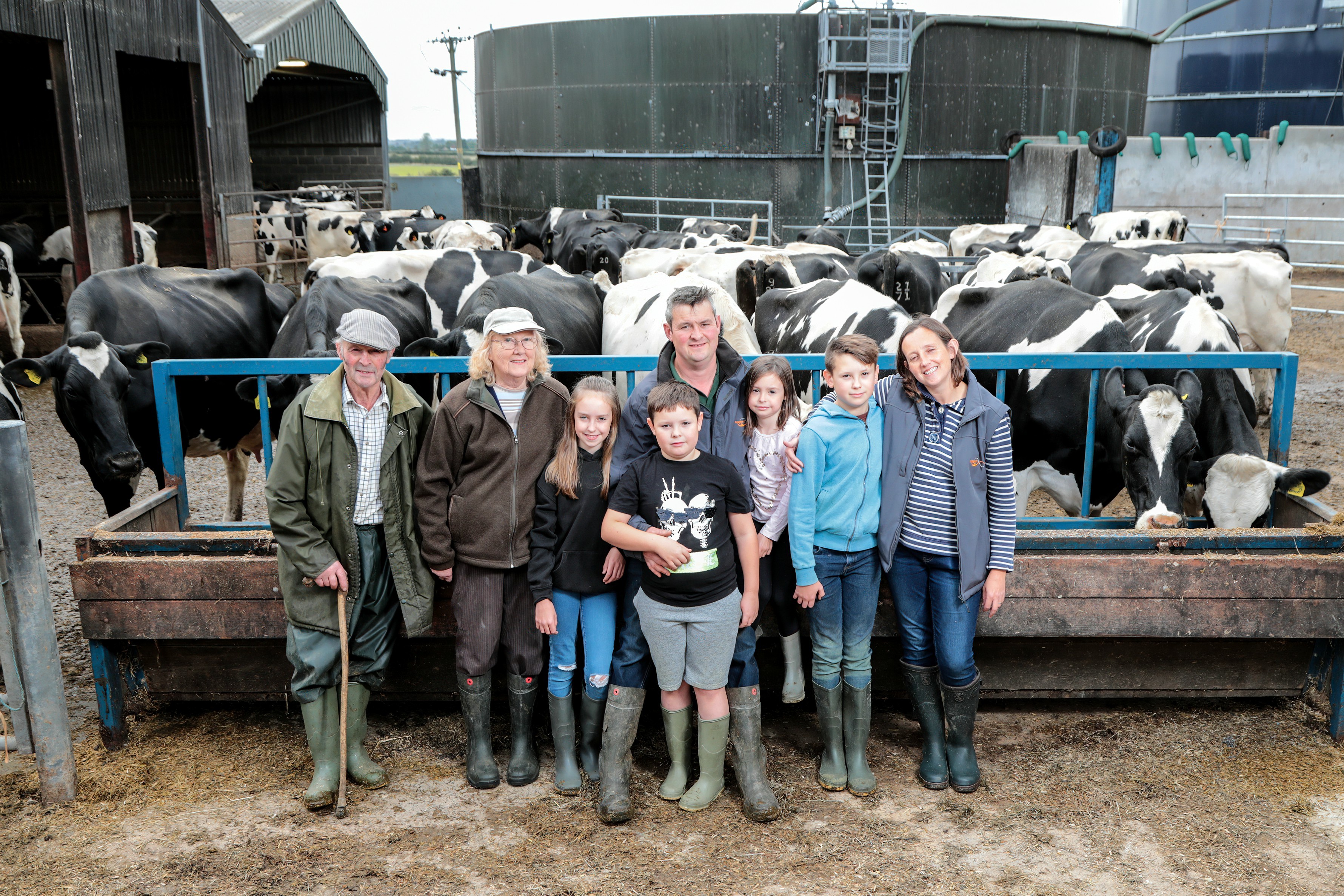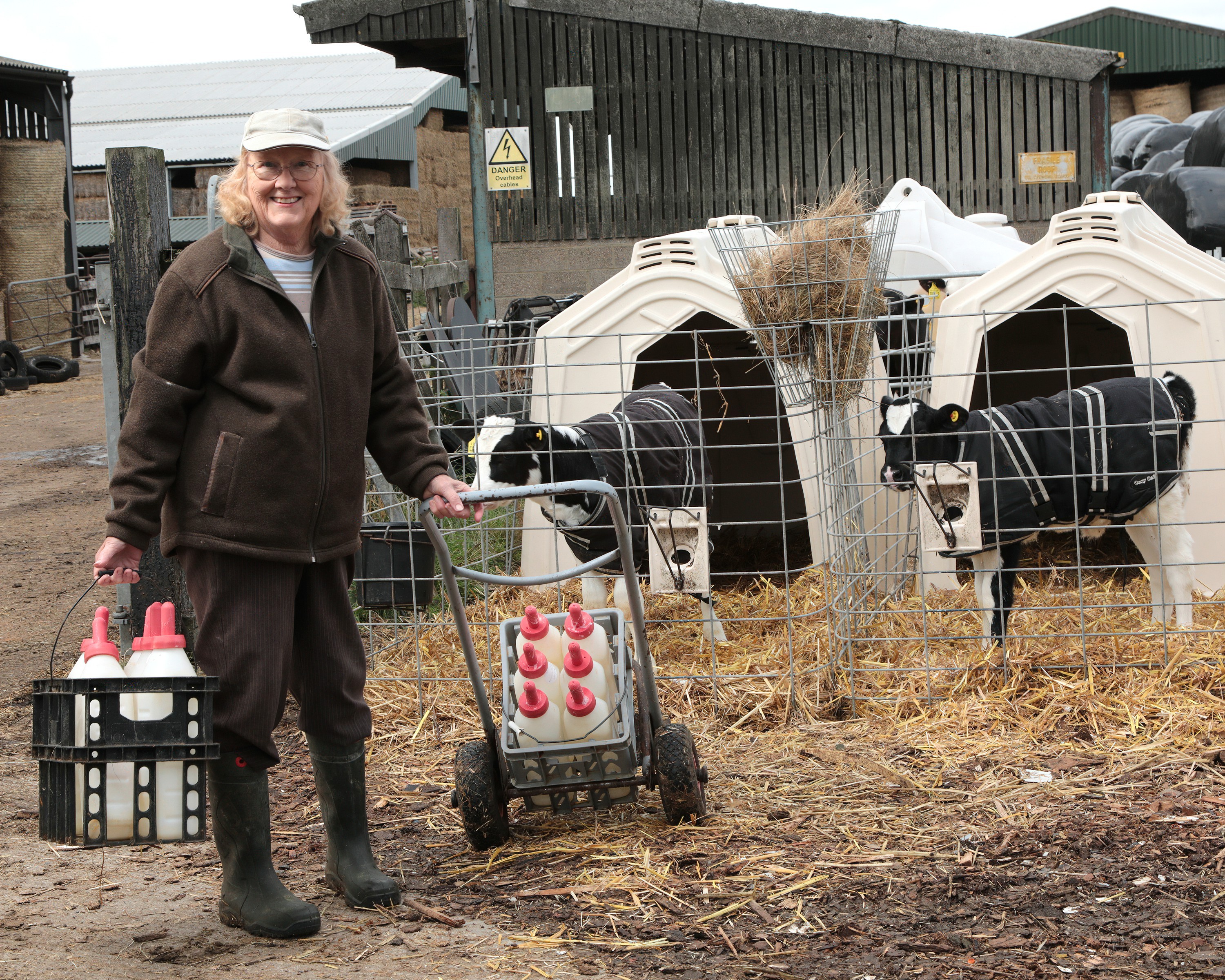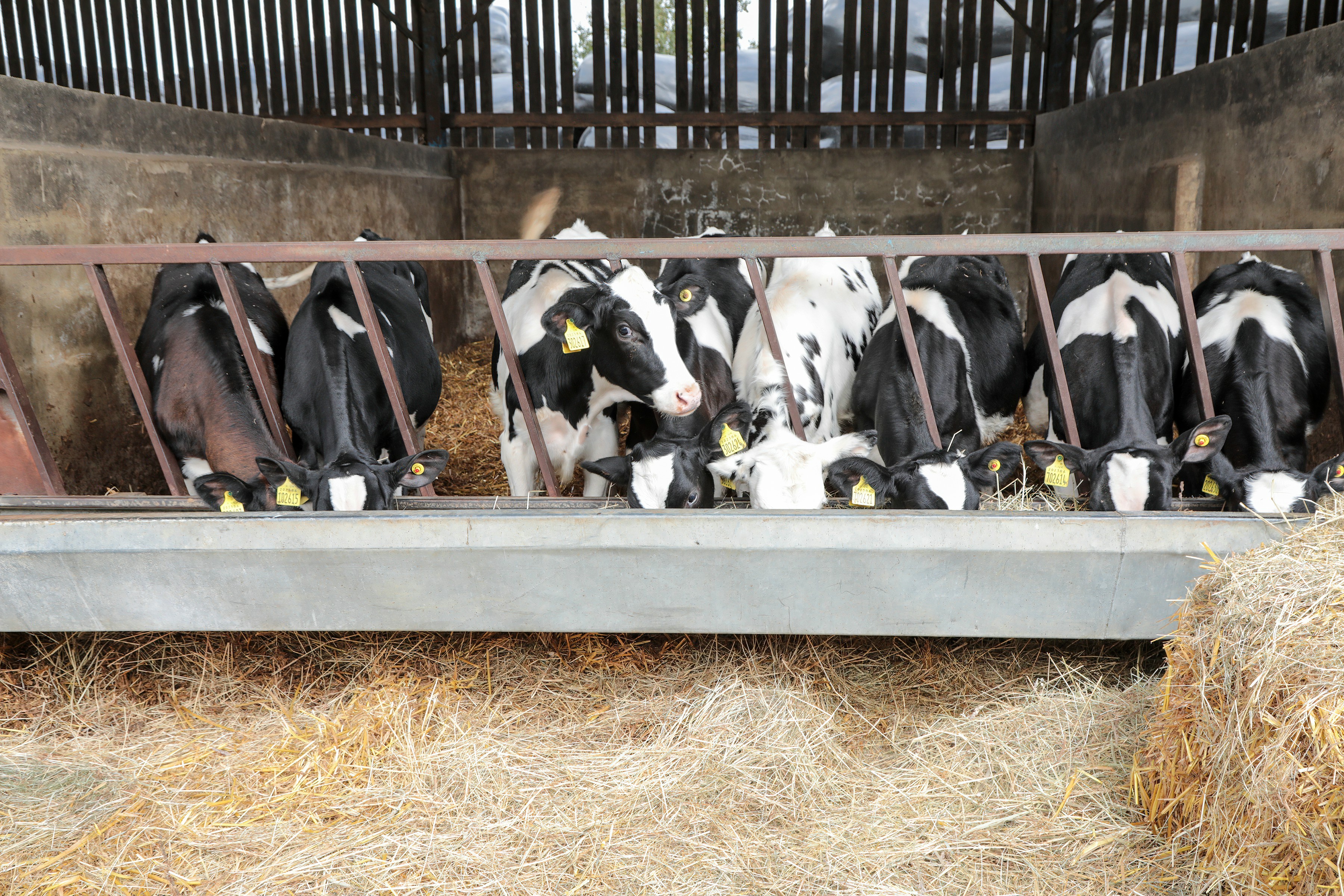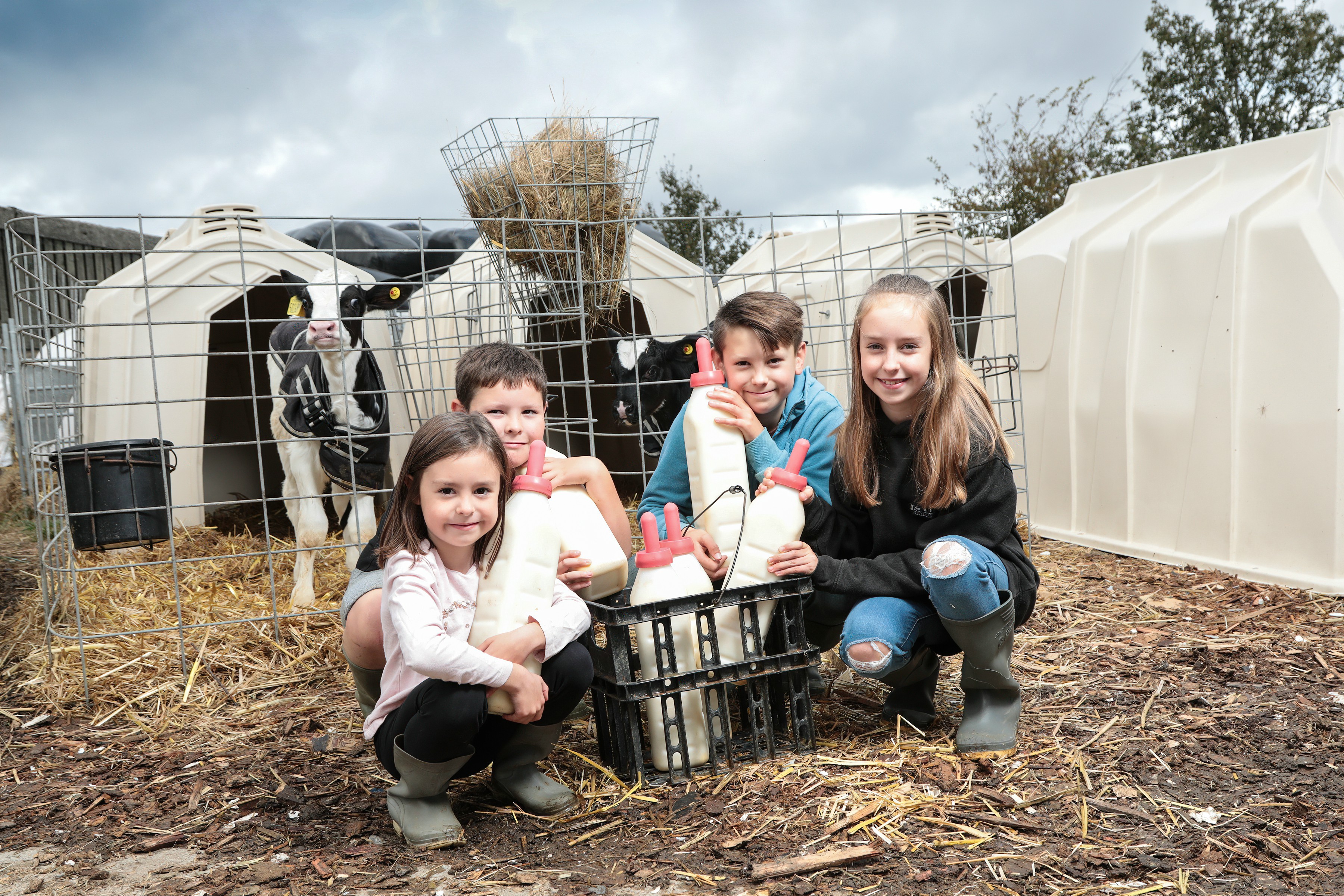- Featured in the Holstein UK Journal -
Succession is at the heart of the success of one Northamptonshire-based pedigree herd. Haydn James is the fourth generation of his family to run the farm, and ChalkhillHolsteins, and, although his four children are still young, he has a close eye on ensuring that the dairy unit has a sustainable and viable future for the next generation. He talked to Rachael Porter

Haydn’s great-grandfather was a farmer. But it was his grandfather, John James, who first founded the family’s dairy herd before WWII. Back then it was made up of predominantly British Friesian cattle and based in Shropshire.
“My grandfather began registering pedigree cattle, back in the 1940s, and dad began upgrading to Holstein bloodlines soon after they became available,” explains Haydn.
Father Gordon was nine when the family relocated to Newlands Farm, at Bozeat near Wellingborough, back in 1946.
Forty-two-year-old Haydn came home from university to farm in 1999 – and hasn’t looked back since. He studied agriculture with animal production science at Newcastle University and says that he knew that he’d eventually find his way back to the family business.
“I’m the youngest of five children – I have four older sisters. None of them wanted to farm, but I always knew that I’d want to come home and milk,” he says.
Dairy business
“After living most of my life in the country, I wanted to go to university in a city – so Newcastle was my choice. And it did the trick. I got the city thing out of my system and I was ready to go back and get involved with the dairy business,” he says, adding that his father was 60-years-old at this point and looking to start loosening his reins and hand them over to Haydn.
“So there wasn’t time to go and work on another unit or to try something else. But I was happy with that.”
Back in 1999, the herd comprised 100 milkers and numbers have gradually expanded to today’s 180 head by adding home-reared replacements. Haydn’s responsibilities have also grown and he semi-officially took charge of the unit in 2009.
“Dad is still very much involved, but he’s relinquished most of the control and given me the chance to make the big decisions and manage the herd my way.”
The herd calves all year round and is currently averaging 10,400 litres of milk, at 4.04% butterfat and 3.35% protein, with a somatic cell count of 180,000 cells/ml. Milk is sold to Arla.

Conventional system
The management system is conventional, with cows fed a TMR during the winter but grazed and buffer-fed during the summer.
The herd is fully closed – no stock has been bought in for more than five years. And 140 head of young stock are also reared and managed at the unit.
Haydn runs the business in partnership with his father, as well as his mother, Margaret, and his wife, Claire.
“Claire trained as a farm secretary, so she’s very much in charge of the admin. Mum takes care of the young stock and calves. And dad likes to busy himself with tractor and field work. The cows are my focus now.”
Haydn has just installed Cow Manager to improve his understanding of how cows work and can be better managed. He feels it is a brilliant tool and, as only sexed semen is used, it helps on timing of insemination.
The 110-hectare unit is also home to 300 breeding ewes, which lamb in February and March. “And we all muck in then – it’s a busy time,” he says.
Sire selection is all down to Haydn and he says it’s been pretty straightforward, since he signed up exclusively with Cogent. “There are so many good sires out there to choose from and this helps me to narrow the selection down, without compromising on genetic quality,” he says.
“I went with Cogent because I looked at my herd and saw that the long-lasting and productive, trouble-free cows were predominantly by its sires.” He also feels Cogent sexed semen is of a very good standard
A Cogent agent carries out a herd evaluation and then, using a computerised system called Precision Matc’, sires are allocated to individual cows.
Breeding Decisions
Black-and-white sexed semen is tried on the top 50% of the herd. “And that’s the approach that we’ve taken for the past five years.
Cow families currently in the Chalkhill herd include: Aconite, Dolly, Bettina, Charmaine and Wallen.
Two stand-out cows include fifth-lactation Chalkhill Minister Aconite, who is classified EX94, and Chalkhill Shottle Dolly, who has also calved her fifth and classified EX93.
Sire selection is based on fat and protein: “We have plenty of milk, but higher constituent yields help us to make the most of our Arla contract,” says Haydn.
Functional type is important too – sires must score at least +2 on type. “We avoid anything that’s too extreme – we’re looking to breed robust and fertile cows that milk well in the herd for several lactations.”
He’s also looking for body depth: “We want to cow with plenty of capacity for forage and, therefore, milk production from forage. She has to be dairy-like.”
And, he stresses, to maintain a uniform herd there are never more than four different sires in the AI flask at any one time. “We’d never use more than six sires in a 12-month period and, if a bull does well, we’ll usually go back and use him again. The first use is often when they’re genomic sires and the second is typically once they have a daughter proof,” says Haydn.
The herd replacement rate runs at around 28% and, prior to the switch to sexed semen and serving the lower end of the herd with beef semen, the business sold between 15 and 20 surplus heifers each year.
Now just enough heifers are reared to cover the replacement requirement.
Bought-in bloodlines
As for buying in stock, Haydn says that they have bought some great cow families in the past. Purchased cows include: Bubble, Wonder, and Jeannette, from the Linlake herd dispersal sale; and Lulu, Lady, Rae and Cherry from the Cramar herd. Finally Sue from Bilsthorpe.
Why did he buy in some additional cow families? “They’ve all been cows that I thought I could work with and ‘build on’. And they’ve been reasonably priced – I didn’t buy the most expensive in the sales.”
“It’s been very much about buying a ‘foundation’ cow to build on in our herd.”
And, he says, he’s pleased with how the herd has shaped up. “The cows are all uniform in size and other aspects – which makes them simpler to manage on a single TMR. They look as if they belong together. That’s how a herd should look.”
That said, he is looking to improve longevity across the board. “That’s something we’re working on – I guess we’re always looking to milk cows for more lactations. Who isn’t? That’s also makes a great cow.”
The herd is milked twice a day through a 12:24 Fullwood swing-over parlour, installed in 2010. And Haydn does most of the milkings – usually 11 a week.

ET work
Haydn did dabble in some ET work about five years ago. “I had an arrangement with Mark Lee, who has some great cows, so we thought we’d give it a go,” he says.
The cows that Mark flushed were: Crystalclear Dempsey Bliss, a VG Saloon daughter: Manorhaven Outside Shower, a VG Atwood daughter; and Grayridge Heavenly Rhiana, a Mincio daughter. The Bliss has a Flame daughter and the Shower has Flame and Silverado daughters.
There are also ET daughters in the herd from Honesberie September Skylar and Samhaven Second Look August. The latter’s VG 87 Braxton Daughter is in calf to sexed Silverado semen.
A good herd also need modern facilities, so the James family is constantly looking to invest in buildings and other infrastructure at the unit.
“We’ve just built a new silage clamp and installed a pasteuriser, so we can feed whole-milk to the calves safely. Our next project is a new cubicle house for the milkers. This is required as our calving yard is no longer big enough and our heifers do not see a cubicle until post calving.
“The existing shed is 40-years-old. It’s been modernised two or three times during that period. A new shed would allow us to utilise our existing facilities better. So we’re in the planning stage with that at the moment and weighing up our options.”
They’re looking at space for 200-plus cows and mattress beds are currently top of the list. “But we’re also looking a green bedding – it’s all still up for debate.”
Succession planning
He is, ultimately, wanting to build something that will last another 40 years. His four children – Thomas (12), Olivia (11), Isaac (8), and Megan (6) – are all showing an interest in the farm – particularly the cattle.
“So there is a very strong possibility they will want to follow me into the business – and that’s great.”
Thomas is keen on tractors and the other three regularly take part in calf showing. Olivia qualified for the National Calf Show and is showing a calf belonging to Sam and Tracey Wake at Blydale. Isaac recently prepared a calf and took it to a calf show and Megan, with some assistance, did the same.
“Showing calves is something the kids enjoy and it’s a great shop window for our herd – it gets the Chalkhill name out there. Showing cows is another matter entirely. It’s a lot of work and extremely time consuming – we just don’t have time for that.”
The herd is paddock-grazed, with turnout typically from mid-April. Cows come back in mid-October – depending on grass growth and weather conditions.
Heifer calves on the ground are by Goodwhone, Score, Silverado and Dreamer (all Cogent sires). And bulls just added to the AI flask are Achieve and Agronaut. Down calving heifers are by Flame and Entrust, which are both high fertility and high component sires. Haydn does all the AI himself.
Sires that have had a significant influence on the herd include: Shaker, Shottle, Outside, Minister, Ashlar, Glauco, Matson, Goldsun, Entrust, and Goodwhone. “I have some heifers on the ground by Goodwhone and they’re really good. We’ve been using him for two years and we’re not done with him yet,” says Haydn.
Ensuring that there’s a herd and business for the next generation to inherit is also about reconnecting with consumers, according to Haydn. The family has taken part in LEAF Open Farm Sunday for the past seven years – alternating hosting duty with a local arable producer.
“We first did it when I was the local NFU chairman, and it’s continued from there,” he explains.

Self promotion
“I think that it’s important for producers to promote what they do. It’s up to us all to open our gates and showcase our high health and welfare standards, our good production practices, and how we also care for the wider environment.
“No one else can do that for you and the response we get from visitors is fantastic. They’re fascinated and impressed, in equal measure. It’s easy to forget, when you’ve lived and worked on a farm all your life, that there are people who’ve never stepped foot on a farm and don’t know the first thing about where their food comes from.”
They had 800 visitors this year, compared to 350 back in 2012. “We had 1,100 in 2018. It was almost too many. We don’t really advertise the event now – we just send out flyers through the three local primary schools and we have a lot of repeat visitors from the local area. That’s enough.”
Haydn says that one of the nicest things he’s noticed is that there are often three generations of the same family who turn up – grandparents, parents and children. “It’s a day out that really does have something for everyone – the young and the old. It’s something to share.
And that’s how he feels about the farm – he’s working with his father to build a sustainable and viable business for his children – his father’s grandchildren.
“Succession isn’t just about handing over the reins – there has to be a healthy business to pass on. And that’s not just about engaging the next generation of dairy breeders and producers – it’s also about informing and pleasing consumers.”
Newland Farm facts
Unit size: 110 hectares, plus 80 hectares of rented grassland
Altitude: 100 metres above sea level
Soil type: Bedfordshire clay
Rainfall: 600mm
Milking parlour: 12:24 swing-over, built in 2010.
Chalkhill Holsteins facts
Established: 1940s
Herd size: 175 cows, plus 140 followers
Average yield: 10,400 litres, at 4.04% butterfat and 3.35% protein, twice-a-day milking
Somatic cell count: 180,000 cells/ml
Calving interval: 404 days
Influential cow families
Aconite
Dolly
Bettina
Charmaine
Wallen
Bubble
Wonder
Jannette
Lulu
Lady
Rae
Cherry
Influential sires
Goodwhone
Shottle
Shaker
Outside
Ashlar
Glauco
Matson
Goldson
Entrust
Chalkhill classifications
20 EX
68 VG
